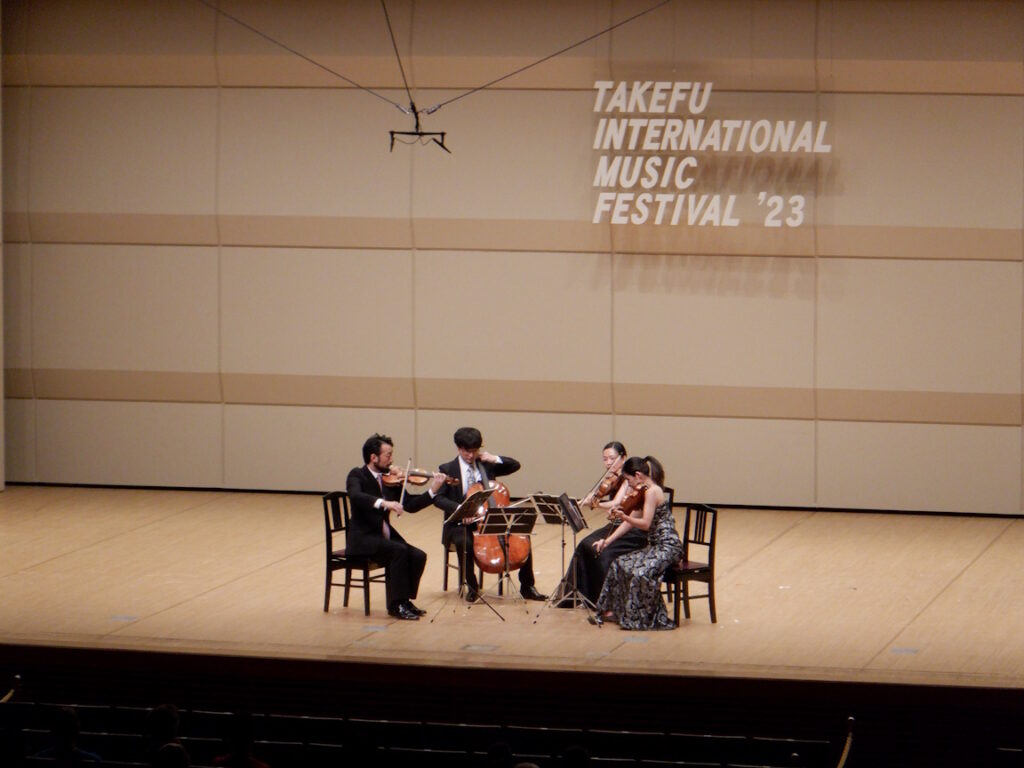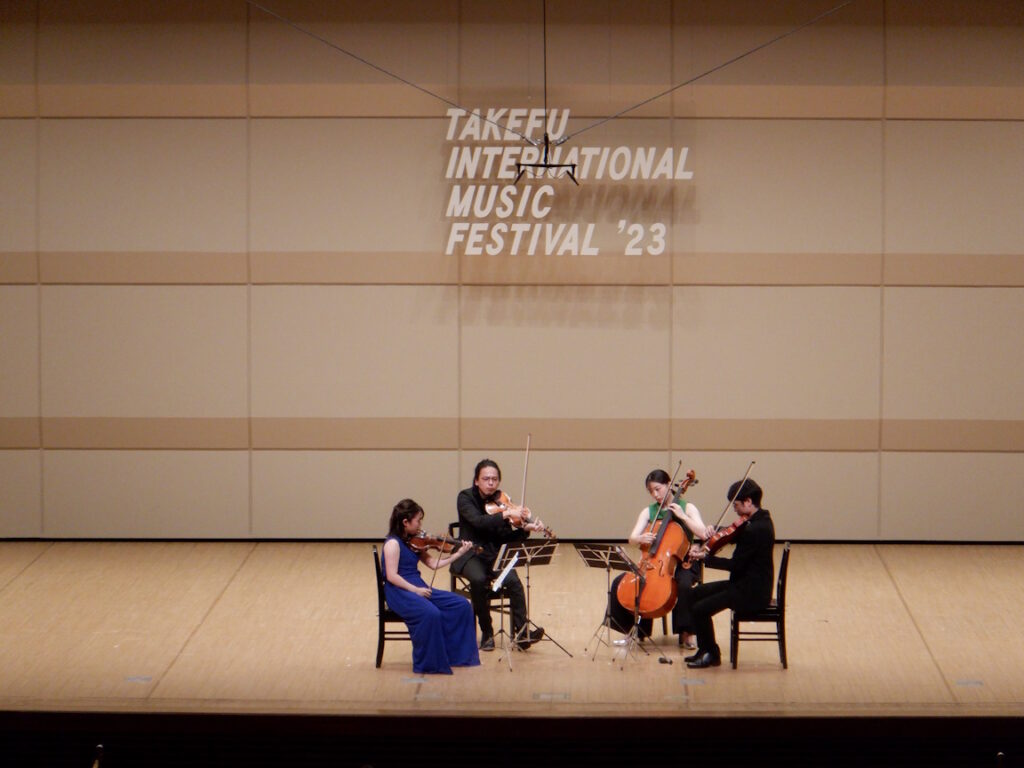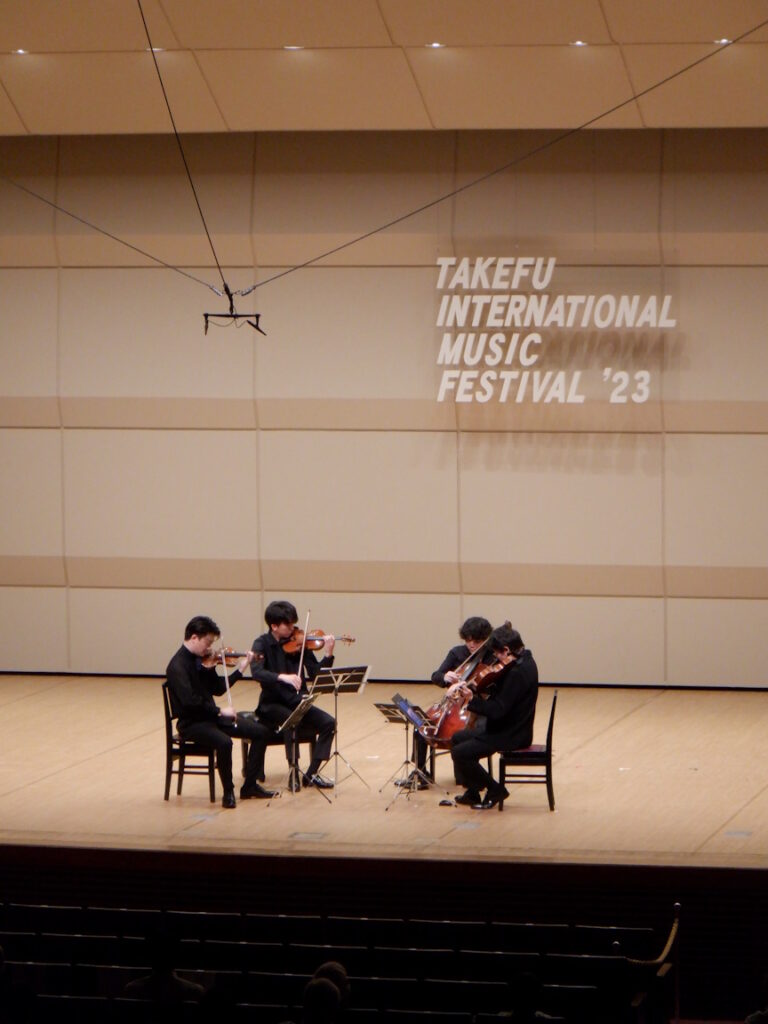武生国際音楽祭2023、9月8日の細川俊夫と仲間たちコンサートの英語版プログラムノートです。日本語版については、武生国際音楽祭2023で販売中のプログラム冊子等をご参照ください。
Märt-Matis Lill : My Weeping Voice Is the Wind of Autumn
(Mario CAROLI/flute, UEDA Nozomi/clarinet, KASAI Tomoko/percussion, OYA Saori/piano, HEMMI Yasutaka/violin, MIZUNO Yuya/cello)
For a long time, I have been interested in something that could be called an opposition between the objective and the subjective in music as well as in art in general. I used to prefer more objective or distant ways of expression in my creative practice, but lately I have been enjoying the idea of incorporating a more intimate and emotional approach. I see the conflict and concordance between these two opposites as similar to the relation between nature and man. I draw inspiration from classical Asian poetry which deals extensively with the relation of nature and man. The title of my work is taken from one such poem:
Shake oh tomb! My weeping voice is the wind of autumn.
This haiku, considered one of the most powerful in Japanese literature, was written by Basho after the shocking and untimely death of his closest friend. Hence the unusually emotional style, where nature and man (the objective and the subjective) are joined in a unique and expressive way, unprecedented in haiku tradition. I tried to convey this interconnectedness in my music. I wrote this piece while thinking of two young musicians whose trip to Finland in autumn 2005 ended at the bottom of the sea.” (Märt-Matis Lill)
Justė Janulytė : Aria
(Quartet Integra)
The form of „Aria“ for string quartet (2008) resembles roaming through a labyrinth constructed from a short melody which is being continuously defragmented changing the order of its phrases thus complicating more and more the possibility of reaching the exit until a sort of a solution is found while returning back to the starting point. The piece was commissioned by the Thomas Mann festival in Nida (LT) and written for Kaunas string quartet. First performance: Thomas Mann festival, Nida (LT) | 12th of July 2008 (Justė Janulytė)
Hristina Šušak : Wind of Fuji
(TAJIMA Tadashi/shakuhachi, SUZUKI Tosiya/recorder)
When I was in Japan in December last year, I was very inspired by the culture and atmosphere. Exactly during this trip I got the idea for this piece called Winds of Fuji. Although I didn’t visit Fuji the whole atmosphere in Japan inspired me and gave an image and sound in my head. The piece is based on the motif of a small third (interval) which is being elaborated in many ways using several playing techniques and musical parameters. The intensity regarding all present musical materials is changing constantly without some particular (for us) noticable rules, just like wind. (Hristina Šušak)
Naoki Sakata : Invisible River
UENO Yoshie/flute, UEDA Nozomi/clarinet, KASAI Tomoko/percussion, Quartet Integra)
As the title “Invisible river” suggests, this piece is composed of textures reminiscent of fluids. At the same time, I treated the gap in the time and space as the important materiel with the Japanese concept “Ma”. As a result, silence and tranquil textures are inserted from the middle of the piece onward. Inspiration from the shakuhachi played an important role in the composition process. For example, the music of the shakuhachi is formed by a variety of wavering sounds such as “yuri” and “korokoro. In addition, the “one sound” played by this instrument is a very complex mixture of pitched sound and breath noise. Thus, this work is constructed by various fluctuating effect and complex sound. Because of the pursuit the instrumental technique for this theme, the piece includes a scene in which the strings are played with wooden sticks. The use of sticks coated with rosin allows a delicate organization of noise and musical sounds. (Naoki Sakata)
Toshio Hosokawa : Extasis
(MOHRI Fumika/violin)
This work was composed from the end of 2015 to early 2016 for Sayaka Shoji. To me, the primitive form of music is in Shamanism. In order to pray, from this world to the other world, Shamans will communicate with a world we cannot see in our daily lives through singing. The appearance of Sayaka Shoji performing the violin as a solo, for me, is the form of a Miko. She uses the violin as an extension of her own voice (song), and by trying to be united with the immense energy of the universe flowing within and outside of her, she sings. Exstasis means to go beyond oneself. It is the desire to leave the order of the ordinary life; it is to leave from the ego, and also an uncontainable impulsive greed to the depth of a figure (chaos) like a bottomless swamp. From the player (miko) to the space and to the void, the sound of the violin has brush stroke-like shapes of an eastern calligraphy. The piece was revised by the composer in 2020. (Toshio Hosokawa)
Toshio Hosokawa : Klänge von Lethe
(UENO Yoshie/flute, OKAMOTO Yuya/cello, KITAMURA Tomoki/piano)
This work was composed for the trio of Emmanuel Pahud (flute), Jean-Guihen Queyras (violoncello), and Eric Le Sage (piano), and is related to The Water of Lethe for piano quartet composed in 2015. I believe the act of composition is to listen to the “river of sounds” that is always flowing in our cosmos, and write them down on music following my own method. It is said that the ancient Greek believed, for the reincarnation of their souls, they would be forced to drink the water of Lethe after death in order to erase their memories of previous lives. The quiet flow of river Lethe, which is for forgetting the deep sorrows and sins of this world, stimulates my imagination. The flow of the river teaches us that the time constantly passes by without pause, and at the same time teaches us that new time is constantly created. The sorrow of passing by and the hope of being newly regenerated exist together there. From Alphonse de Lamartine Le Vallon J’ai trop vu, trop senti, trop aimé dans ma vie; Je viens chercher vivant le calme du Léthé. (I have seen much, felt much, loved much in my life; And, still living, come to seek the calmness of Lethe.) (Toshio Hosokawa)
Toshio Hosokawa : Drei Engel-Lieder
(Ilse EERENS/soprano, YOSHINO Naoko/harp)
Angels exist between this world and a world beyond this world that cannot be seen. They are the messengers who let us see a glimpse of the other world. In recent years, I have become interested in shamanism and have composed music where the musicians assume the role of shamans who let us see the world beyond this world through the use of sound. In this work, the soprano plays the role of both an angel and a shaman (miko). The texts I’ve chosen are by a female Jewish German poet, Else Lasker-Schüler, and a Jewish philosopher, Gershom Scholem. (Toshio Hosokawa)











